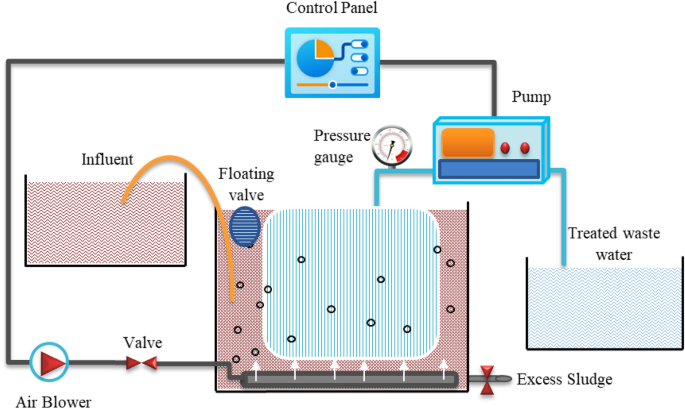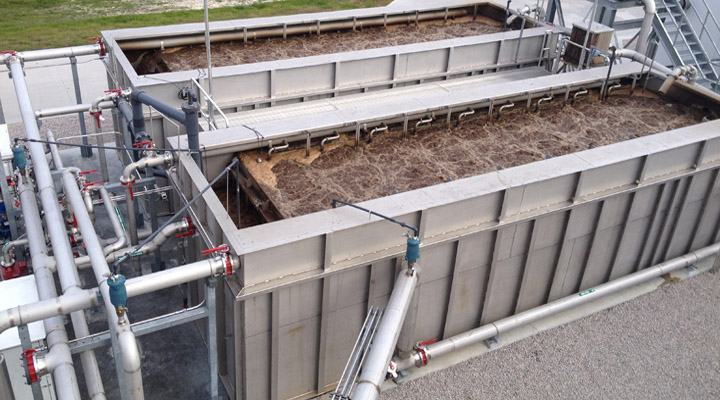How Membrane Bioreactor Contributes to the Reduction of Energy Consumption in Water Treatment
How Membrane Bioreactor Contributes to the Reduction of Energy Consumption in Water Treatment
Blog Article
Understanding Membrane Layer Bioreactors: The Future of Wastewater Therapy
Membrane layer bioreactors (MBRs) stand for a noteworthy advancement in the area of wastewater therapy, integrating biological processes with sophisticated membrane layer filtration to improve effluent top quality. As global water scarcity and stringent regulative frameworks come to be progressively pushing problems, MBR innovation uses an efficient response with its capability to minimize impact and maximize resource recovery. However, the fostering of MBRs is not without its difficulties, which merit cautious consideration. What are the essential variables affecting their implementation and long-lasting stability in various contexts? The solutions may improve our technique to wastewater administration.
What Are Membrane Layer Bioreactors?

The core elements of MBR systems consist of a bioreactor where microbial activity happens and a membrane layer system that filters the combined alcohol. This dual capability allows the synchronised degradation of natural issue and solid-liquid separation in a single step. MBRs can run in both immersed and outside configurations, with submerged systems being a lot more typical because of their compact design and functional effectiveness.
The adoption of MBR innovation has gained traction in various applications, ranging from community wastewater treatment to industrial effluent management. MBRs are particularly helpful in circumstances where space is stringent or minimal effluent high quality criteria have to be fulfilled. By keeping a high focus of bacteria within the bioreactor, MBRs enhance the degradation of natural pollutants, therefore yielding greater therapy effectiveness compared to conventional methods.
Trick Benefits of MBR Technology
The integration of organic treatment with membrane layer filtering in MBR systems uses numerous benefits that set it apart from standard wastewater therapy techniques. One of the key benefits is the enhanced effluent quality. MBRs successfully remove put on hold pathogens and solids, attaining higher degrees of purification that fulfill strict discharge criteria and assist in water reuse applications.

Another considerable advantage is the decreased sludge production. MBR systems create less excess sludge, resulting in reduced disposal expenses and a decrease in ecological influence. The closed nature of the membrane layer system decreases the threat of smell exhausts and improves general procedure control.
Last But Not Least, MBRs are versatile and versatile, making them appropriate for numerous wastewater kinds, consisting of commercial and municipal sources. The capability to incorporate with innovative therapy innovations even more improves their effectiveness, making MBRs an encouraging option for the future of wastewater management.
Difficulties and Limitations of MBRs
While MBR modern technology offers countless advantages, it additionally sites encounters numerous obstacles and constraints that can affect its extensive fostering. One significant obstacle is the high resources and operational prices related to MBR systems. The first investment for membrane layer materials and the required facilities can be substantial, making it much less obtainable for smaller markets or districts.
Furthermore, membrane fouling remains a vital concern that can diminish system efficiency and increase maintenance demands. Fouling takes place when solids, organic issue, or microbes collect on the membrane surface area, resulting in lowered permeability and needing constant click here now cleaning or substitute.
Another limitation includes the complexity of the innovation. MBR systems need proficient employees for operation and maintenance, which can be an obstacle in areas with restricted technical competence. The disposal of spent membranes provides ecological problems, as the materials are usually not naturally degradable and can add to throw away management obstacles.
Lastly, while MBRs can effectively deal with a wide variety of wastewater, they may not appropriate for all applications, specifically those with high focus of fats, oils, and greases, necessitating further research and innovation to address these constraints.
Applications of Membrane Bioreactors
In numerous markets, membrane bioreactors (MBRs) have actually emerged as a flexible service for wastewater therapy (Membrane Bioreactor). Their applications span metropolitan, industrial, and agricultural setups, showcasing their flexibility and effectiveness in diverse settings. In community wastewater therapy plants, MBRs substantially enhance effluent quality, permitting water reuse and minimizing the ecological effect of released wastewater
Industrially, MBRs are used in food and beverage processing, fabric production, and pharmaceutical manufacturing, where they properly deal with high-strength waste streams. Their ability to handle fluctuating loads and varying impurity concentrations makes them especially useful in this hyperlink these markets. Furthermore, MBRs promote the elimination of virus, put on hold solids, and organic issue, adding to conformity with rigid discharge guidelines.
In agriculture, MBRs are significantly made use of for dealing with agricultural runoff and animals wastewater, allowing the recovery of nutrients for plant food production. They likewise help in the therapy of greywater for watering, promoting sustainable water monitoring practices.
The adaptability of MBRs is additional shown by their integration with various other modern technologies, such as anaerobic food digestion and progressed oxidation procedures, boosting general efficiency and source recuperation in wastewater therapy systems.
The Future of Wastewater Treatment
Advancements in innovation and an expanding focus on sustainability are forming the future of wastewater treatment. Membrane layer bioreactors (MBRs) exhibit this change by integrating biological treatment procedures with membrane layer filtration, resulting in premium effluent appropriate for reuse. The fad in the direction of round economies is motivating facilities to take on MBRs for their ability to recover sources, such as water and nutrients, from wastewater.
Innovations in membrane layer materials and setup are enhancing the effectiveness and long life of MBR systems, decreasing functional costs and energy usage. Smart technology integration, consisting of real-time surveillance and automated control systems, is further enhancing efficiency and enabling predictive upkeep, hence minimizing downtime.
Additionally, regulative pressures and societal expectations are pushing markets and municipalities to embrace even more lasting practices. Membrane Bioreactor. The shift towards decentralized wastewater therapy remedies is acquiring traction, allowing for local treatment that lowers transportation costs and energy use
Conclusion
Membrane bioreactors (MBRs) represent a transformative approach to wastewater therapy, integrating biological procedures with advanced membrane layer innovation. The advantages of MBRs, including enhanced effluent top quality, minimized spatial requirements, and reduced sludge manufacturing, place them as a practical remedy in the middle of growing urbanization and stricter ecological policies. Despite existing challenges, the ongoing advancement in membrane products and operational strategies guarantees to bolster the effectiveness and fostering of MBRs, guaranteeing their pivotal function in the future of sustainable wastewater management.
Membrane layer bioreactors (MBRs) represent a noteworthy innovation in the area of wastewater therapy, integrating organic procedures with sophisticated membrane layer purification to enhance effluent quality.Membrane layer bioreactors (MBRs) integrate biological treatment processes with membrane layer purification to successfully treat wastewater.The combination of organic therapy with membrane layer purification in MBR systems supplies many advantages that establish it apart from traditional wastewater therapy approaches. Membrane bioreactors (MBRs) exemplify this change by incorporating biological therapy processes with membrane filtering, resulting in high-quality effluent appropriate for reuse.Membrane layer bioreactors (MBRs) stand for a transformative method to wastewater therapy, integrating organic procedures with sophisticated membrane modern technology.
Report this page